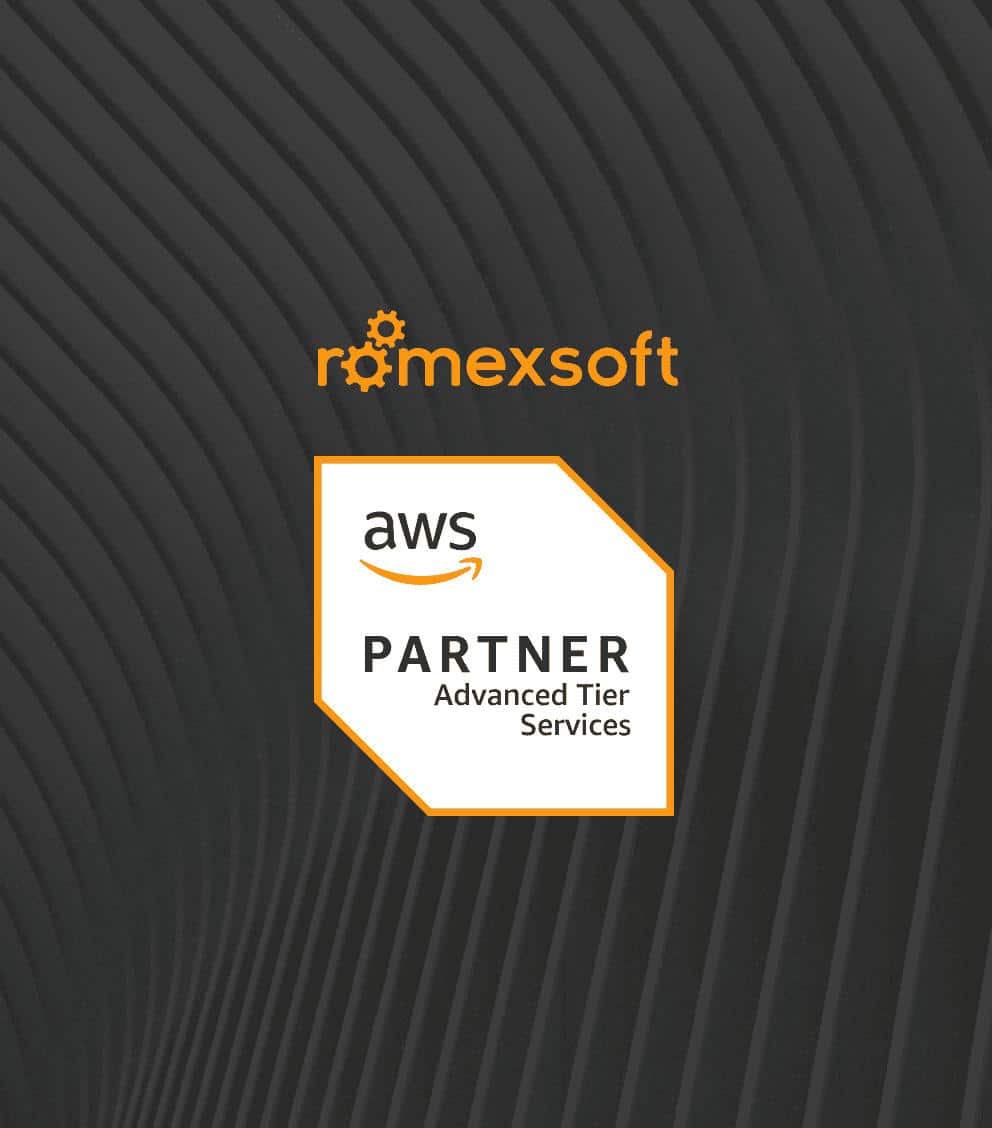Cloud Transformation Strategy Roadmap
From this article, you’ll learn about the importance of a strategic approach to cloud transformation for keeping your system resilient and scalable as it grows with your business. We will cover the key differences between migration and transformation in the cloud, discuss the challenges you will face during these changes, provide real-life examples of how to resolve them, and share a five-phase transformation strategy.
The article covers:
- why having a transformation strategy matters
- migration vs transformation differences
- core modernization & transformation challenges
- real‑world success stories
- five‑phase transformation strategy
- transformation readiness self‑check questions

Table of Contents
Cloud transformation is the process of modernizing the building, deployment, and management of your cloud systems. To put it simply, the transformation is a must-have step when moving from rigid, legacy architecture to the cloud in order to gain scalability, flexibility, and resilience. Those are necessary for any business that wants to remain competitive by handling workloads efficiently.
This change must be strategic in its core because only cloud environments that are built to scale from the start can maintain their performance and evolve along with tech advancements.
Table of Contents
Why a Cloud Transformation Strategy Matters
Rising cloud bills, fragmented infrastructure, and mounting tech debt are only a few of the many issues that can arise without a clear strategy for cloud transformation. The main benefits your business will get from a strategic roadmap to follow during this process include:
- Efficient scaling
Modern, cloud-native architectures (such as containerization and microservices) allow teams to adapt infrastructure dynamically as user demand grows. - Improved reliability and security
By aligning with proven architectural standards, like AWS Well-Architected Framework (AWS WAF), businesses can harden access controls, automate patching, enforce encryption, and centralize audit logging. This reduces the risk of outages or breaches as your systems grow more complex. - Full control of costs
Automation tools and observability platforms provide visibility into resource usage, allowing teams to right-size workloads and allocate budgets efficiently. These tools also allow you to detect anomalies and optimize configurations. - Accelerated delivery
With pipelines, infrastructure as code, and DevOps practices in place, development teams can release new features more quickly and reliably.
Cloud Migration Vs. Cloud Transformation
Cloud migration is the process of moving your applications or infrastructure to the public cloud, such as AWS. You move the system from on-premise structures using processes like lift-and-shift or adding some basic reconfiguration. In essence, the core architecture remains unchanged.
Meanwhile, cloud transformation is the process of changing your infrastructure architecture using cloud-native practices, such as infrastructure as code and security automation. This type of change offers more scalability, speed, and cost control when settling in the cloud.
As you can see, the difference in these approaches is not merely technical but strategic.
Why does this difference matter? Understanding this difference is essential because many teams stop at migration and assume that they already have the best possible outcome. However, transformation is the next logical step in the evolution of your business in the cloud. It allows you to maximize the benefits offered by technology and ensure your budget is used most efficiently. Eventually, it will also help your systems evolve and grow without disruptions or the need to make significant and expensive changes.
Challenges of Cloud Infrastructure Transformation
Cloud transformation is a complex process that often exposes weaknesses and issues with your architecture, teams, and operations. Below, we list common challenges you may face when implementing this change and offer tips on how to resolve or prevent them.
- Outdated and Rigid Infrastructure Is Hard to Change
Many businesses today still run on legacy architecture, such as coupled monolithic systems with manual deployment. These setups cannot be scaled effectively and are hard to enhance with innovative solutions.
How to modernize: First, break down monolithic workloads into smaller services. Next, containerize key components and introduce CI/CD pipelines to automate deployments. This way, you will speed up processes and release cycles without rewriting everything at once. - Cloud Costs Can Rise Unpredictably
Many cloud systems lack observability post-migration. This may result in cloud spend spiraling due to overprovisioned instances, idle resources, and a lack of clarity in cost attribution.
To know your costs: Implement the transformation by using AWS Cost Explorer to identify idle or underused services. Enable resource tagging across environments and set automated alerts on budget thresholds. Conduct regular reviews to identify where you waste money and optimize accordingly. - Hard to Detect Issues Due to Lack of Monitoring
Without centralized logging, traceability, and real-time alerts, you will face issues when detecting anomalies, enforcing security compliance, or maintaining system reliability in general.
To find issues fast: Deploy CloudWatch, ELK, or Prometheus as a centralized observability stack. Ensure that all your services generate structured logs and metrics. Set up alerts for key health indicators. Integrate dashboards that visualize system performance and allow for maintaining awareness of the environment functions. - Security Risks and Identity and Access Management (IAM) Gaps
Implementing a transformation strategy that doesn’t account for consistent access control and scattered audit logs can result in complex multi-account AWS environments with multiple security vulnerabilities. These may include misconfigurations, privilege misuse, and compliance failures.
How to stay secure: Automate identity provisioning and apply service control policies (SCPs) across accounts to standardize governance. Perform regular IAM role audits to eliminate unused permissions and maintain least privilege access. - Not having a Clear Roadmap leads to Chaos
Without a clear transformation strategy, you might fall into reactive changes that create a disjointed environment that’s hard to automate, monitor, and secure.
To stay on track: Conduct a thorough infrastructure assessment to identify high-risk areas and map out technical debt (if any exists). Prioritize changes based on their impact on operational risks and delivery speeds. Build a phased cloud transformation roadmap with clear milestones and owners. - Changes Create Too Much Downtime and Disruption
Many business owners hesitate to implement cloud transformation due to concerns about production disruptions and downtime. It’s a valid concern because starting this process without solid staging environments, rollback strategies, and real-time oversight is sure to cause problems.
To prevent disruptions: Implement blue/green or canary deployments with monitoring in place. Test infrastructure changes in isolated staging environments first. Define rollback procedures for each critical change. Ensure comprehensive support coverage during rollout windows. - Delays Caused by Misalignment Across Teams
Development, operations, and leadership teams must be aligned to prevent issues caused by miscommunication, poor responsibility management, interdepartmental friction, and unclear priorities.
How to manage communications: Establish shared goals and KPIs across Dev and Ops departments. Standardize workflows and establish regular cross-functional syncs to maintain transparency and align expectations across teams. - Deployment time went down from hours to minutes
- Safer incremental rollouts are now available across the environment
- Standardized delivery workflows improved team collaboration
- Incident detection time reduced while SLA compliance improved
- Cost savings from identifying and shutting down underutilized resources
- Proactive infrastructure tuning during growth spikes
- Standardized access across environments and elimination of significant IAM gaps
- Improved audit readiness for compliance with industry regulations
- Reduced risks of misconfiguration and unauthorized access
- Mapping service dependencies and identifying infrastructure bottlenecks
- Auditing performance metrics, cost anomalies, and security gaps
- Highlighting legacy systems, manual configurations, and other modernization blockers
- Defining transformation objectives: improving uptime, spend reduction, faster releases, etc.
- Categorizing workloads for rehosting, replatforming, or complete refactoring
- Creating a phased execution roadmap with built-in rollback strategies and clear sprint planning
- Implementing workflows to automate deployment and rollback
- Containerizing or modularizing high-impact components to improve flexibility
- Migrating or re-architecting services in stages, with validation after each step
- Setting up full-stack observability: metrics, logs, traces, and alerts
- Applying IAM best practices, enforcing encryption, and restricting access with least-privilege policies
- Automating compliance checks and security scanning to identify issues early
- Tuning autoscaling parameters and right-sizing resource allocations
- Monitoring spend patterns and applying FinOps strategies for cloud cost control
- Extending system coverage with 24/7 monitoring or managed services support
- Is your architecture monolithic or tightly coupled?
- Do small changes require full-system deployments?
- Can teams deploy independently, or is every release a coordination risk?
- Does scaling one feature mean scaling everything?
- Is your AWS bill growing so fast that you aren’t sure of the value you get?
- Are you overprovisioning for peak load instead of scaling dynamically?
- Can you attribute spend by service, team, or customer?
- Do you have real-time metrics, logs, and traces across your systems?
- Are alerts meaningful and come in real-time?
- Can your team quickly diagnose and resolve incidents?
- Is the scope of IAM roles narrow enough for maximum security?
- Is your policy enforcement consistent and automated?
- Is compliance tracked via spreadsheets and ad-hoc reviews or automated?
- Is infrastructure codified, or passed down through tribal knowledge?
- Do environments drift from staging to production?
- Does onboarding new engineers take a long time?
- Are developers pushing for speed while ops prioritizes stability?
- Is leadership expecting predictability, but no one owns infrastructure outcomes?
- Do teams have shared definitions of “done” and a standard delivery model?
Examples of Successful Cloud Transformation
Below you can see some examples of how Romexsoft addressed technical and operational challenges when implementing transformation strategies for clients.
CI/CD Enablement for Legacy PaaS
The multi-vendor online marketplace platform with a legacy infrastructure had issues with release speed and environment control. Due to the rigid legacy setup, they faced challenges with inconsistent workflows and inadequate control. Romexsoft resolved these issues by containerizing the core application, establishing a pipeline, and automating environment provisioning.
Results:
Improving Monitoring and Cost Visibility for SaaS
LearnCube, an AWS-based SaaS company, started to scale rapidly, but its visibility practices couldn’t keep up. Due to this, they struggled to understand their infrastructure performance and cloud spend.
Romexsoft enhanced the client’s cloud transformation by implementing full-stack observability. It included log centralization, custom dashboards, real-time alerts, and cost monitoring integrated into the DevOps workflow.
Results:
Security Hardening and IAM Standardization
Greenfence, a company operating within a highly compliance-sensitive industry, encountered security gaps. Inconsistent IAM policies, fragmented audit logs, and unmonitored access patterns put the business at risk.
Romexsoft started by conducting a full security audit to identify issues. Then, we enforced least privilege access controls, centralized logging with AWS CloudTrail, and activated native threat detection tools, including Amazon GuardDuty.
Results:
Cloud Transformation Strategy
At Romexsoft, we see cloud transformation as a continuous process that requires a structured approach. Our goals when performing it for our clients are to minimize risks while modernizing infrastructure and offering businesses long-term, resilient solutions. Years of hands-on experience with AWS enable us to identify five key phases to an efficient transformation strategy.
Baseline Discovery and Technical Risk Mapping
The first phase must provide you with clarity. Therefore, it encompasses an analysis of the current infrastructure to understand the risks and architectural limitations. At this stage, we establish a baseline that will guide the rest of the cloud transformation process.
This phase includes:
Strategic Workload Segmentation and Roadmap Design
The next step is building a goal-oriented and pragmatic cloud transformation plan. We segment the work by business value, risk, and complexity to make the changes gradual and minimize disruptions.
The planning stage covers:
Incremental Modernization and CI/CD Enablement
Modernizing the infrastructure is the next step in cloud transformation. We opt for incremental and testable changes to reduce the risk that comes with large-scale cutovers. This approach allows for rapid feedback and cuts the disruptions to business operations.
Modernization requires:
Built-In Observability and Security Reinforcement
The next phase of our transformation strategy focuses on securing the environment and ensuring its observability. At Romexsoft, we embed these capabilities into the infrastructure from the start to maximize efficiency and stability.
Securing the system includes:
Continuous Tuning and Scalable Operations Support
The final phase is precisely what turns cloud transformation into a continuous process instead of a finite migration. As the cloud is dynamic, ensuring top-notch system performance requires constant optimization and tuning.
Ongoing maintenance encompasses:
How to Know You Are Ready for Cloud Transformation
If your infrastructure starts holding you back, it’s time for a cloud transformation that will help your system grow without compromising its security and integrity. Answering the following questions will help you understand if it’s the right time to implement this change.
Positive answers to any of these indicate that your system might lack flexibility, so a cloud transformation is in order.
Next, consider the questions related to costs:
You should always have complete control and visibility regarding your cloud spending.
If costs aren’t an issue, consider your system’s observability:
The lack of observability is a major security concern. Therefore, implement a cloud transformation to ensure your incident response is near-instant and system recovery is fast.
Answer some questions about your cloud security next:
Automation should be the baseline of cloud security because these systems are dynamic. Manual efforts simply cannot keep up, so if you are using any manual processes, now is the time for cloud transformation.
Next, answer some questions about your operations to evaluate efficiency:
You should be aiming for consistency in deployments and minimal drift in every area.
Final questions to ask yourself focus on team alignment:
If there is any misalignment across your teams, you should unify processes and establish a shared cloud-native foundation.
Cloud Transformation FAQ
Observability lies at the heart of cloud transformation. It provides teams with real-time insights into the system’s performance, eliminating the need for manual checks. As a result, they can detect any issues early and fix them fast. Observability is also key to deploying changes with minimal risks and optimizing resource usage.
Handling legacy systems that can’t be easily refactored is about balance. Follow the steps outlined below to maintain stability while implementing long-term transformation.
1. Isolate high-risk and high-change areas through service boundaries or APIs. This way, when you start modernization, it will work around the legacy core to prevent critical disruptions.
2. Gradually offload functionality to modular services or cloud-native components. Maintain the legacy system's stability and observability during the process to ensure the changes proceed smoothly.
3. Integrate automation and monitoring where possible, even in older systems.
Yes, cloud transformation lays the groundwork for AI/ML adoption. The main benefit comes from a cloud-native foundation that is scalable and resilient. This transformation also introduces observability, a key element for AI/ML integration. Meanwhile, infrastructure modernization prepares your system for integrating data pipelines, scaling compute on demand, and managing GPU-intensive workloads.
You don’t always need to change the organizational structure to support cloud-native operations. However, you will likely need to change your business culture and how your teams operate, collaborate, share responsibilities, and make decisions. One of the requirements of cloud transformation is closer collaboration between development, operations, and security teams. The following tips should help you achieve it:
- Give product teams more infrastructure ownership through self-service platforms.
- Embed reliability and security expertise within development workflows.
- Shift from ticket-based ops to automated pipelines and real-time observability.



